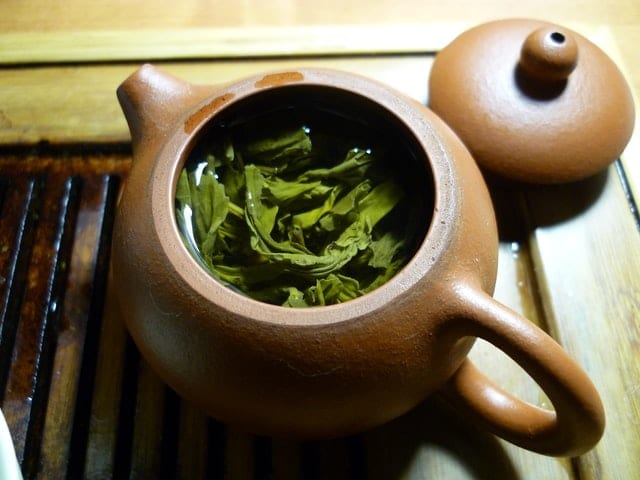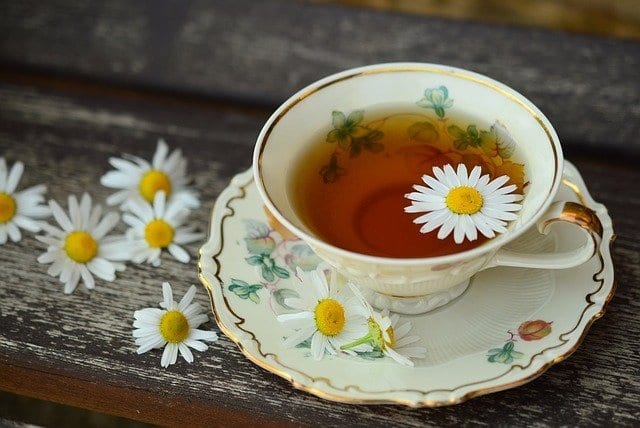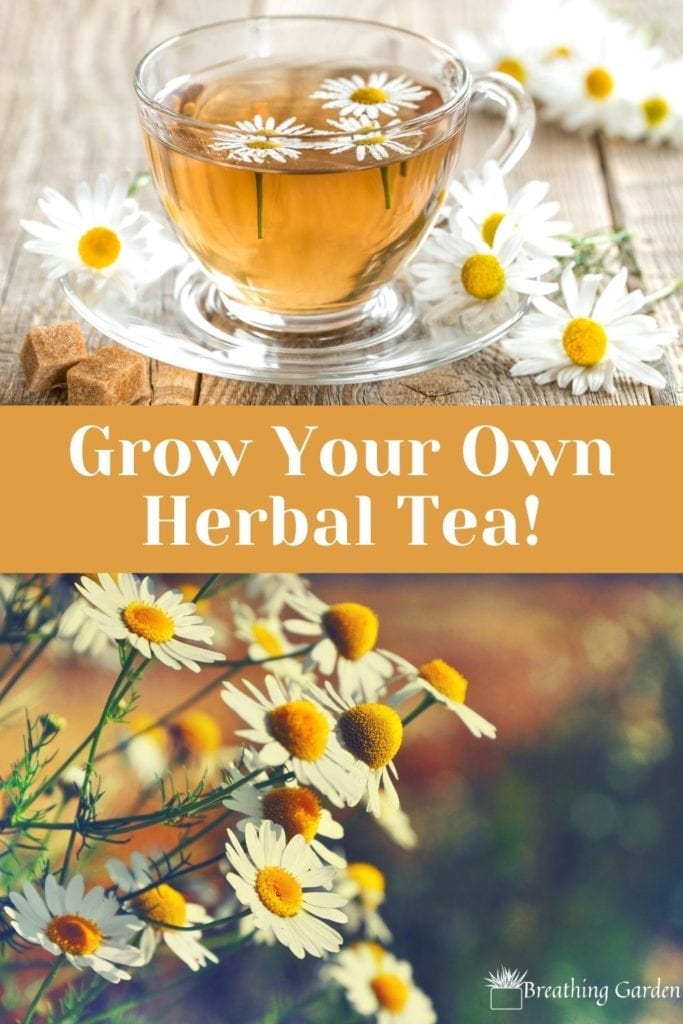Tea is one of the most popular drinks all over the world. Did you know you can grow your own tea at home? This way you can choose the quality of the ingredients you use, and you have the perk of having the greenery plant life to see year-round.
*This post may include affiliate links. When you purchase items from these links, we will receive a small commission, at no extra cost to you, to help support this website. Thank you for your support! Read more ->
This article will primarily discuss herbal tea ingredients you can grow, which some people may not consider “tea,” but it will be considered tea in this article!
It’s very simple to grow your own tea at home, and you can also decide if you want to use the fresh ingredients or dry them before steeping them!
The Tea Plant – Camellia sinensis

Before going into herbal teas, the Camellia sinesis deserves a mention. This is a shrub that the leaves are used for in white, green, and black tea, depending on the variety of the plant.
This is the plant to grow if you want to make your own black, white, or green tea. It does take living in the right climate and having patience to grow, as it needs humid climates, and one variety cannot withstand freezes.
It also takes about 3 years until you can get a decent sized harvest, to retrieve enough leaves for about a year’s supply of tea. To make the various types of teas, the leaves need to have different treatments as well. Some leaves need to be oxidized (black), and others may require fermentation.
Herbal Teas

The rest of this article will focus on herbal tea ingredients that you can grow easily at home, and can steep fresh or dried versions of the plant! Grow these indoors, in containers, or outside in your garden.
Grow your own tea with these 7 plants to make wonderful blends or to drink them on their own in piping hot water! If you choose to use fresh leaves, remember to add in more than you think you should, as they haven’t been dried to the point that all of the flavor condensed.
Peppermint

Peppermint is one of the most popular herbal teas to drink. Commonly only the one ingredient is needed, and you can use fresh leaves off the peppermint plant!
There are many different types of mint plants, so specifically look for peppermint when purchasing the plant. Regular mint does work as well in tea, but will be a different flavor! Combine it with lemon balm for a great tea combo!
Peppermint is a great plant to grow in containers, and it really likes moisture and humidity (see how to increase humidity for your plants here). It can grow in full sun or partial sun. Just remember to keep it moist! (Water a little more frequently than you would your other plants). Read how to grow mint indoors!
Lemon Balm

Get the lemon flavor and scent from lemon balm without having to squeeze a lemon! This leafy herb is a great addition to so many teas, especially combining it with ginger for a sensitive stomach remedy.
As a member of the mint family, the lemon balm has a lot of the same requirements as the peppermint, with part sun or full sun and likes a lot of moisture. Make sure to harvest most of the leaves at the end of summer, as it will not grow much during the winter season (especially if kept outside).
Chamomile

Chamomile is another great plant to grow your own tea at home, as this does not require any other ingredients to make a wonderful drink. It’s commonly used as a nighttime drink, to calm you and get you ready for sleep.
Not only will chamomile add a beautiful flower to your garden, but it’s strong scent will also keep pests away. Grow this in a container near your door to keep pests from your porch and from coming inside the house, and so it doesn’t take over your garden!
Use the entire flower for the chamomile tea, either fresh or dried. They’re best picked right before they go into full bloom.
Lavender

Lavender has so many uses and is known for it’s amazing fragrance. It can also be a great flavor to add in to your tea! Make sure that you use a culinary variety of lavender for tea, like English Lavender.
This plant loves being in full sun. It can survive with less light, but will not grow as well or bloom. Cut the stems down to only a few leaves remaining after it blooms (more information on pruning here), tie these up and hang them upside down to dry. (Find out how to grow lavender indoors here).
Lavender is a great plant to add to a floral tea or an earl grey black tea.
Keep reading: 5 uses for fresh lavender
Rosemary

Rosemary may seem like a savory plant to add into a tea, but it is a great ingredient for so many tea blends. Try making a tea blend with rosemary, mint, and sage!
Not only can you grow your own tea by having rosemary in the garden, but it’s also a great plant to have for flavoring many meals too!
Rosemary can be grown in containers, or it can go wild in your garden. Rosemary grows best in full sun and doesn’t like too much water, so ensure it is in a well draining soil and you don’t overwater!
Sage

Common Sage is another savory plant that can be great in cooking and tea. This goes so well with mint and rosemary in a hot tea. It’s a perfect drink for winter.
Sage is really easy to grow indoors in your kitchen, just remember to plant it in well draining soil, like the rosemary. It also prefers full sun, growing better with more sunlight.
Ginger

Technically a root rather than herb, this is a great addition to so many teas, especially for sensitive stomachs.
Ginger is an easy plant to grow, as you can use part of the root you buy at the grocery store to grow your own! Plant it with at least 2 inches of space to grow further down in the soil. It’s a good idea to grow this in a pot, as it does not like very cold weather.
Grow your own ginger either indoors, or bring it inside for the winter to keep it thriving all year long.
One of the best parts about ginger is that you can take some of the root out, replant the rest, and use the part you just took off, while keeping the plant growing!
Drying the Ingredients

Some herbs can be hung to dry out naturally, while others will be too moist for this to work. Some, like mint, do better being dried in the oven at a very low temperature.
Lavender and rosemary can be dried out by hanging them up. Tie a string around the end of the cuttings and hang them so the leaves are upside down. (Read more how to dry herbs here).
These are just some of the herbal plants you can use to grow your own tea, but the most common and popular. Happy gardening!
Pin It!
Want to keep these plant ideas for later? Save them to Pinterest!






